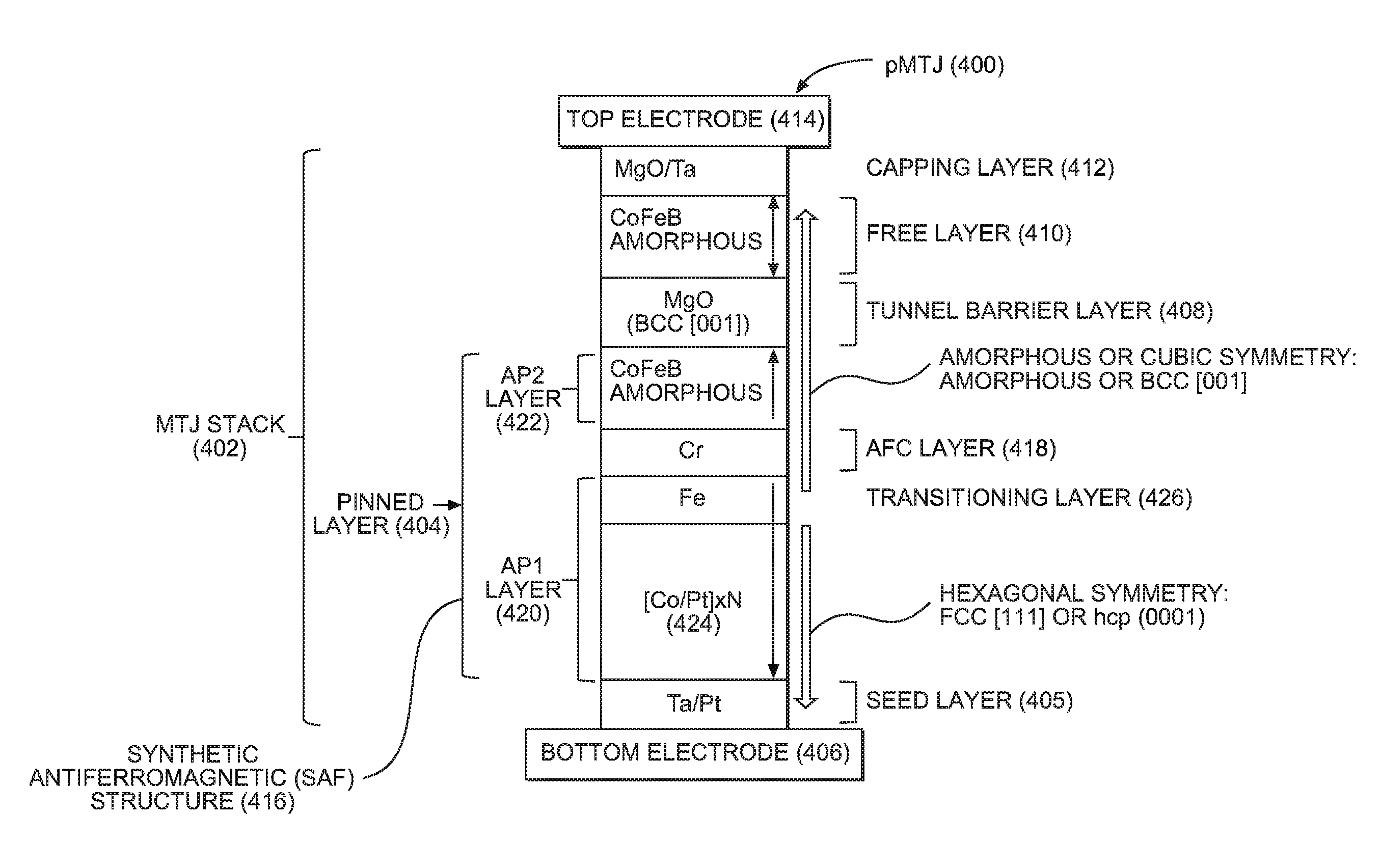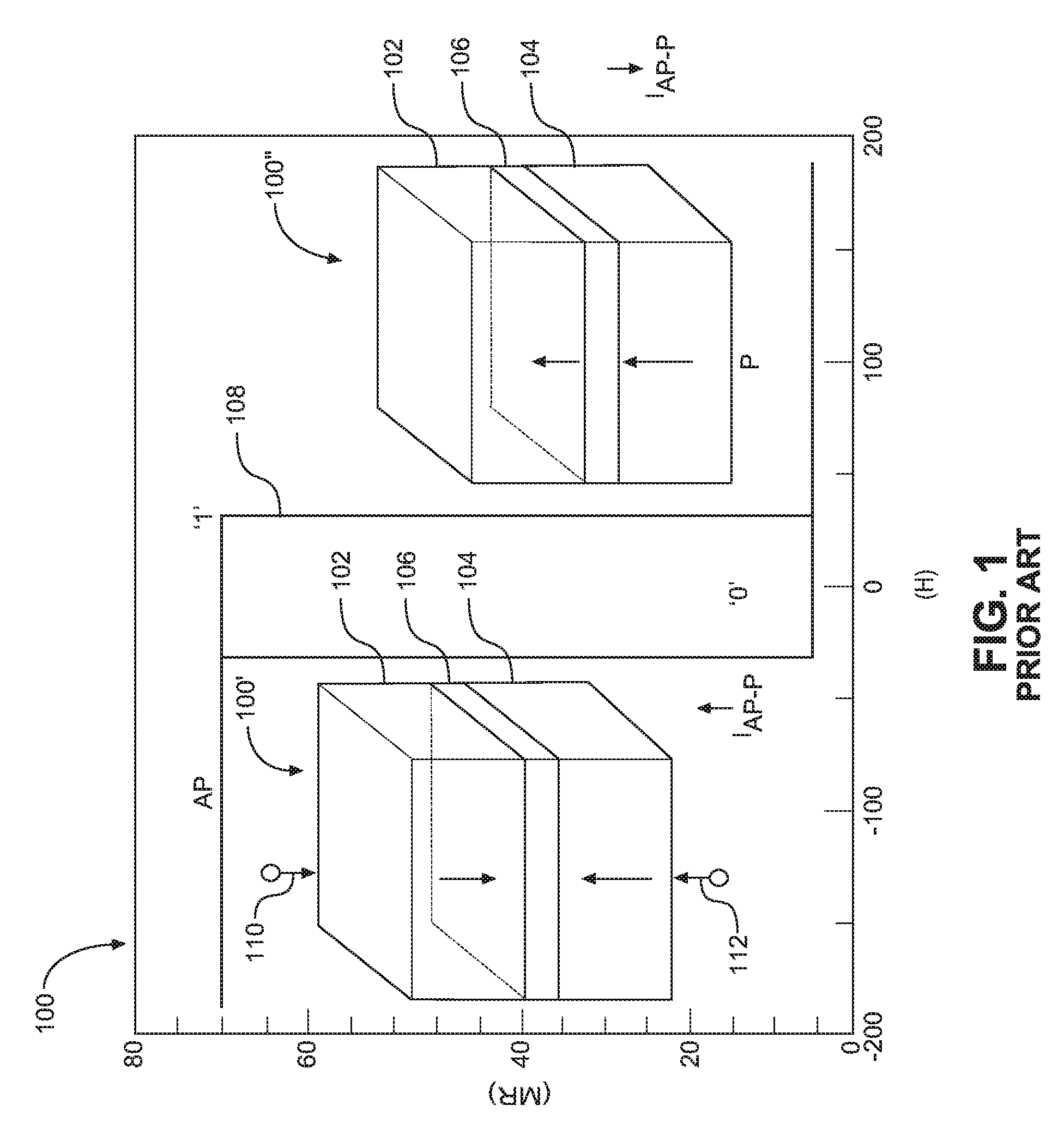Perpendicular magnetic tunnel junction (pMTJ) devices employing a thin pinned layer stack and providing a transitioning start to a body-centered cubic (BCC) crystalline / amorphous structure below an upper anti-parallel (AP) layer
a technology of perpendicular magnetic tunnel junction and pinned layer stack, which is applied in solid-state devices, instruments, galvano-magnetic material selection, etc., can solve the problems of difficult integration of mtj stack structure into metal-oxide (mos) devices, as well as the etch process to form such mos devices, and achieve high tunnel magnetoresistance ratio (tmr), reduce pinned layer thickness, and prevent magnetic field bias
- Summary
- Abstract
- Description
- Claims
- Application Information
AI Technical Summary
Benefits of technology
Problems solved by technology
Method used
Image
Examples
Embodiment Construction
[0034]With reference now to the drawing figures, several exemplary aspects of the present disclosure are described. The word “exemplary” is used herein to mean “serving as an example, instance, or illustration.” Any aspect described herein as “exemplary” is not necessarily to be construed as preferred or advantageous over other aspects.
[0035]Aspects of the present disclosure involve perpendicular magnetic tunnel junction (pMTJ) devices employing a thin pinned layer stack with an thin upper anti-parallel (AP) layer (AP2 layer). Another aspect of the present disclosure involves employing a combination of materials in the pMTJ device for a bottom anti-parallel (AP) layer (AP1 layer) and an anti-ferromagnetic coupling (AFC) layer in the thin pinned layer stack providing a transitioning start to a body-centered cubic (BCC) crystalline / amorphous structure below an upper AP layer (AP2 layer). This can promote a high tunnel magnetoresistance ratio (TMR) with reduced pinned layer thickness. ...
PUM
 Login to View More
Login to View More Abstract
Description
Claims
Application Information
 Login to View More
Login to View More - R&D
- Intellectual Property
- Life Sciences
- Materials
- Tech Scout
- Unparalleled Data Quality
- Higher Quality Content
- 60% Fewer Hallucinations
Browse by: Latest US Patents, China's latest patents, Technical Efficacy Thesaurus, Application Domain, Technology Topic, Popular Technical Reports.
© 2025 PatSnap. All rights reserved.Legal|Privacy policy|Modern Slavery Act Transparency Statement|Sitemap|About US| Contact US: help@patsnap.com



